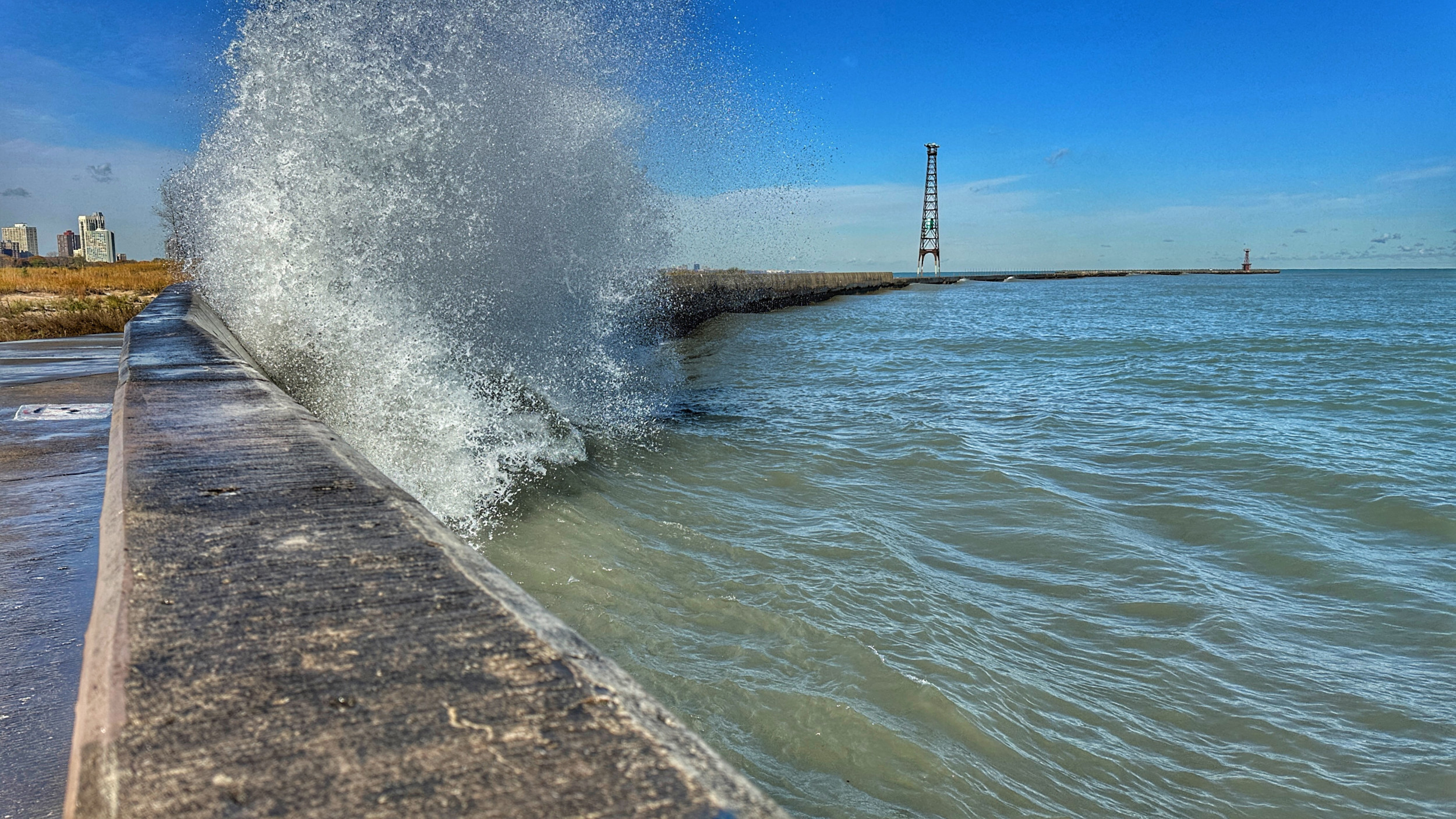
More than 13 million people along lake shorelines in the U.S. were advised to “stay out of the water” on Thursday as weather conditions created a dangerous environment in the water for beachgoers.
Why It Matters
The Great Lakes consistently rank as a premier recreation destination in the U.S., especially during summer. Despite water temperatures that remain cold early in the season, recreational swimmers frequent the region’s beaches.
The beach hazards statement comes as the Great Lakes Surf Rescue Project has reported 38 Great Lakes drownings this year. Most drownings occur at Lake Michigan, but water-related injuries and deaths can also occur at the other Great Lakes.
Jose Carlos Castro Antelo/Getty
What To Know
As of Thursday morning, the National Weather Service (NWS) issued beach hazard statements for large areas of shoreline in at least seven states, impacting millions during a peak summer period. Dangerous swimming conditions—including life-threatening waves, rip currents and strong longshore currents—have prompted officials in the Midwest, Northeast and Eastern Seaboard to urge the public to avoid entering the water in some areas until conditions improve.
Beach hazard statements were in place for counties in Illinois, Indiana, Michigan, Ohio, Pennsylvania, Wisconsin and New York, as well as along portions of the North Carolina and South Carolina coasts. The advisories caution against entering the water because of high waves and powerful currents that have proven hazardous for swimmers and water sport enthusiasts.
In total, more than 13 million people live in the regions under active warnings.
The NWS warned that coastal and lakeshore areas are facing waves as high as 7 feet and unpredictable, dangerous currents. In the Midwest, the Great Lakes region faces heightened drowning risks during the busy summer season. Hazard statements specify waves up to 7 feet in Michigan. In Illinois and Indiana, waves will be between 4 and 6 feet. In Wisconsin, “life-threatening waves of 3 to 5 feet and dangerous currents are expected.”
Earlier in the week, dangerous conditions hit Wisconsin’s Lake Superior shoreline. NWS lead meteorologist Jonathan Wolfe told Newsweek that northeast winds are causing the dangerous conditions during a time of year when area beaches are populated.
Wolfe added that beach hazards statements are a somewhat common occurrence during the summer months.
Further east, strong currents and dangerous swimming conditions extend to large stretches of the Lake Erie and Lake Ontario shorelines in Ohio, Pennsylvania and New York.
NWS Cleveland warned of a “high risk of rip currents” for counties including Lorain, Cuyahoga and northern Erie. In New York, beach hazard statements for Monroe, Wayne, Oswego, Niagara, Orleans, Jefferson and Erie counties highlight “strong currents and dangerous swimming conditions expected.”
Hazard statements reach the Atlantic coast as well, with counties in North Carolina and South Carolina advised to take precautions because of strong longshore and rip currents. NWS advisories for Pender, New Hanover, Georgetown, Carteret and Onslow counties, among others, warn “strong longshore currents can sweep swimmers and surfers into rip currents, piers, jetties and other hazardous areas.”
Officials strongly advise staying out of the water and avoiding hazardous areas like breakwalls, piers and jetties, as stated in each NWS advisory.
What People Are Saying
NWS Morehead City, North Carolina, in a beach hazards statement: “The longshore current is strong enough to prevent swimmers from being able to keep their feet on the bottom making it difficult to return to shore.”
NWS Chicago, in a beach hazards statement: “Swimming conditions will be life threatening, especially for inexperienced swimmers.”
What Happens Next
Most beach hazard statements remain in effect for the duration of Thursday, and in cases such as Illinois, Indiana and sections of New York, until Friday morning. The NWS advises the public to monitor local alerts, respect all posted beach advisories, and remain out of the water as conditions evolve. Beachgoers also are told not to venture onto piers, jetties, breakwalls or other shoreline structures.
